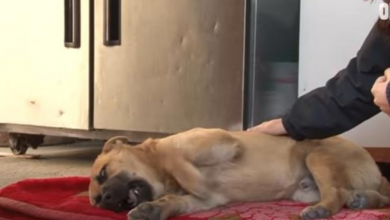Bulldog’s Family Is Devastated As They Watch Him Battle Dementia

Television presenter and model Ulrika Jonsson has shared her heartbreak as she watches her Bulldog, Fella, battle dementia, writes ilovemydogsomuch
Sadly, Fella found himself at a shelter after his previous owner just wanted “to get rid of him” at nine years old. He had a mouth full of tumors, a broken jaw, bad arthritis, testicular cancer, and was covered in fleas.

Jonsson adopted the ten-year-old dog last year after she was only supposed to foster him for two weeks. After falling in love with him, and not wanting him to bounce around with different families at his old age, she knew she couldn’t part ways with him.
“We couldn’t just foster you,” Jonsson wrote on Instagram. “You were a FAILED Foster. We had to keep you. How could someone want to get rid of a special boy like you? You’re a keeper.”

Jonsson has recently found out that he is now suffering from dementia, which causes memory loss, change in behavior, and inability to perform everyday activities.
Jonsson says that it’s gotten so bad that sometimes Fell will look at her and not even recognize her. He sits and stares at doors, or barks at walls for no reason.
During their walks, he sometimes forgets where he is and will just stop or turn around.

Jonsson is devastated to witness her beloved fur baby deal with this each day, but admits that she never knew dogs could get dementia.
According to the Animal Health Foundation, just like people, dogs can also develop degenerative brain diseases also known as canine cognitive dysfunction syndrome.

But unlike humans, these signs mental decline in pets go unnoticed until the condition is too advanced to slow its progression down.
According to a large study published in 2011 on the disease, scientists reported that about 14 perfect of dogs develop CCD, but less than two percent are diagnosed. The risk of the disease also increases with age, with over 40 percent of dogs at age 15 having at least one symptom.
Source: ilovemydogsomuch.tv










